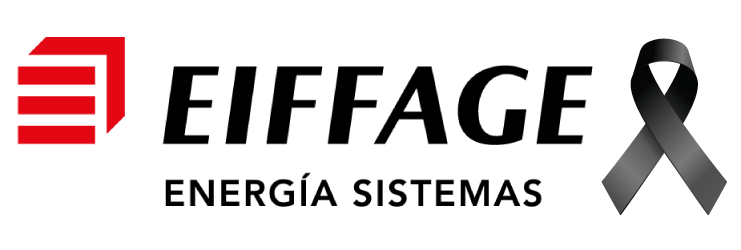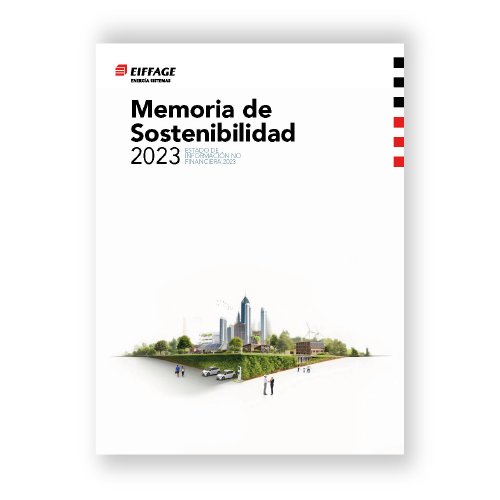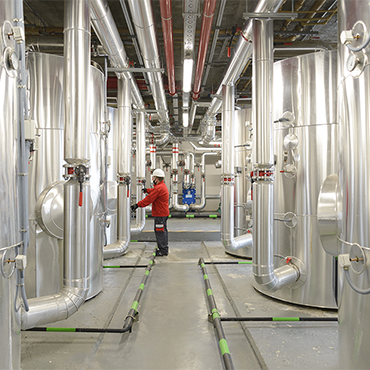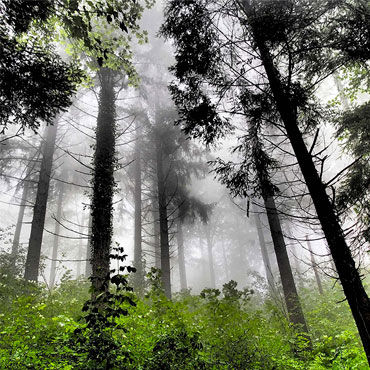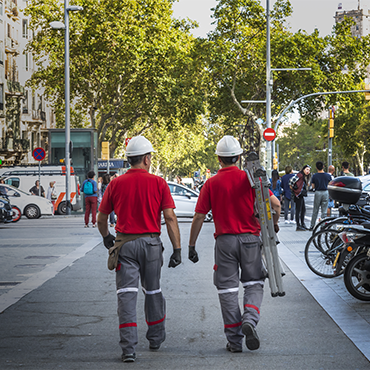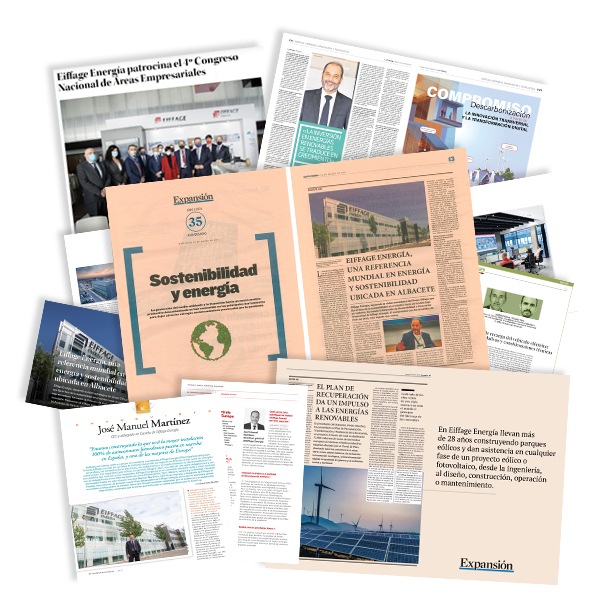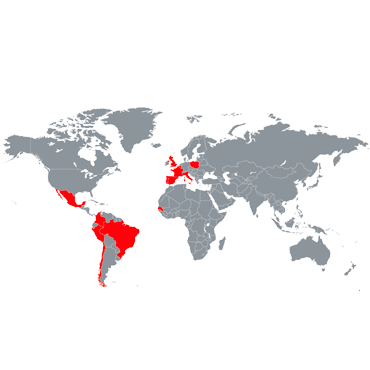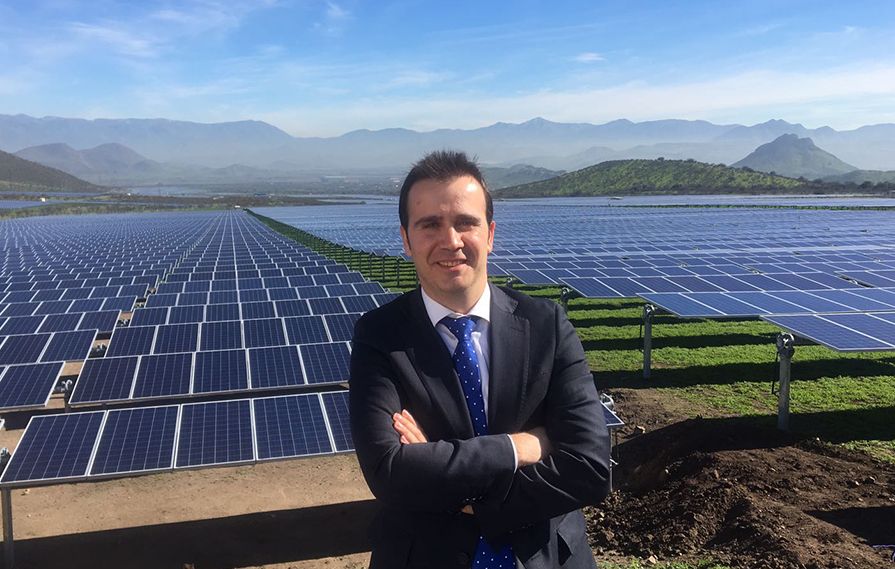Eiffage Energía Chile is one of Eiffage Energía’s subsidiaries in Latin America specialised in the areas of energy, civil engineering and construction. The subsidiary works with the highest standards of quality and safety in all projects while reducing deadlines for implementation of the works and promoting loyalty of all the Eiffage Group’s customers.
In 2013, SunEdison requested that Eiffage Energía build the solar plant San Andres in Copiapó, which at the time was the largest plant in Latin America. Then came the solar plant Crucero, Javiera, and finally Quilapilún, renewable energy projects which positioned the company very well in the Chilean country.
From the first project in Chile, Eiffage Energía decided to establish itself in the country as it is a leading nation in Latin America and very socio-politically stable, and also has a target of 20% of renewable energies by 2025.
Javier García Cruzado, Director of Eiffage Energía Chile , explains in this interview the projection of the Chilean subsidiary in the future of green energy.
Question: Are there plans to implement projects of renewable energies to the North of the country?
Javier García: Yes, we are currently implementing that which is the largest PVS plant of the moment, the Huatacondo PVSP, located in Pozo Almonte, we are implementing the EPC project, developing both the engineering and the purchase of all equipment, as well as the total construction and injection into the interconnected system Norte Grande in this case, and it is a solar plant of more than 100 MW (103 MW).
Question: How expensive is it to maintain these solar power panels these days?
Javier García: Maintenance is not so expensive, the technology has come a long way. Solar power is the future. It is clean energy, it is democratic because it really is everywhere, it can be installed on all sites, and also costs have been greatly reduced. Therefore, we are talking about the future, from now to several years ahead.
Photovoltaic solar power is not proven to have any negative aspect on the future, and the possible downside would be the management of waste from the panels after their useful life, but for this there is a protocol and a waste management policy to prevent any negative effects on the environment.
Question: How long does a photovoltaic panel last? How much useful life does it have?
Javier García: At the moment, photovoltaic panels with a useful life of 30 years are already being worked with. Actually, the Huatacondo PVSP in Pozo Almonte, that Eiffage Energía Chile is currently implementing, has a useful life of 30 years.
Question: Great news! And there, are they going to inject a lot of electric energy into to the central interconnected system?
Javier García: Yes, actually, it has the same installed capacity as that of Quilapilún, more than 100 MW.
Question: And wind power vs solar power, with regard to performance, are they similar?
Javier García: The two are perfectly compatible, wind power can generate electric energy in those hours where there is no sun and can be perfectly complemented with photovoltaic solar power.
Question: And that was my question. Eventually, can they co-exist in the same place? Yes. It is not a competition, but rather a partnership. Isn’t that so?
Javier García: Yes, actually, quite efficient prototypes for the generation of renewable energies 24 hours a day have already been made. In addition, Chile allows it to happen, the geographic diversity of Chile allows the installation of various wind farms in various areas, being complemented with photovoltaic solar power and thus generating electric energy 24 hours a day. There has been a technological breakthrough in the forecast of the production of these plants for the generation of electric energy that allows us to really know at each point what the wind is going to be, the energy we are going to generate and what amount of sun we are going to have.
Question: It is very impressive. You have 350,000 panels in Quilapilún. That, in a year, prevents the annual emission of 125,000 tons of C02 (carbon dioxide) into the atmosphere, which is equivalent to taking 22,000 cars off the road in Santiago. But you are more concerned with the solar power part, aren’t you?
Javier García: No, with wind power too. Our story really began with wind power. We have implemented more than 50 PV plants and more than 80 solar parks, actually we have installed more than 2,500 wind turbines all over the world. With a history of more than 30 years. Actually, we, as Eiffage Energía, installed the first wind farm in Spain. Consequently, our Know How not only focuses on photovoltaics, but also in work on wind power generation projects.
Question: Perfect. You’ve been diversifying matrices, but equally you’ve been developing projects in all the non-conventional renewable energies, let’s say.
Javier García: Of course, in Chile we observed that the country is completely stable and, therefore, we decided to diversify in Chile.
Question: So, to continue talking about non-conventional is like talking about the Modulated Frequency on the radio. It is going to become obsolete, since, if it is already going to be 20% of the total energy, and that’s only the beginning…, because I imagine that this is not going to stop, hopefully! Already from the environmental point of view, talking about non-conventional is going to become obsolete, isn’t it?
Javier García: 70% by 2050. That is Chile’s objective. And, in my opinion, it is going to be achieved.
Question: Then there will be no reason for having thermal electric power.
Javier García: No, there shouldn’t be. The culture of maintaining (caring for, preserving) the environment, curbing climate change, Chile’s protection of itself with its energy matrix for not being dependent on imports of fossil fuels, that’s what is going to make us forget about power by coal or oil generation.
You can listen to the full interview with this link.
